Field-Tested Night Sky Observation Gear Including Red Light Headlamps, Smart Telescopes, Star Mapping Apps & Powered Comfort Solutions
TESTED Updated October 2025
Imagine seeing the Milky Way so clearly it casts a faint shadow, while you’re wrapped in warmth on a chilly night. This isn’t a dream—it’s what happens when you combine the right stargazing gear for camping. After countless nights under Michigan’s dark skies, we’ve pinpointed the exact equipment that transforms shivering for 30 minutes into comfortable, all-night cosmic exploration.
This OTL guide combines practical astronomy tools with comfort-enhancing gadgets—all available on Amazon with Prime shipping for your next backcountry adventure.
The right combination of vision-preserving lighting, digital planetarium apps, and warmth solutions extends your observing sessions from minutes into hours of comfortable cosmic exploration under pristine skies.
🎯 Our Top 7 Stargazing Gear Picks for Camping
- Best Red Light Headlamp: Black Diamond Spot 400 → Preserves night vision for hours
- Best Phone Mount: Joby GorillaPod → Hands-free star mapping
- Best Heated Blanket: Greenoak USB Heated Throw → All-night comfort powered by a power station
- Best Power Station: Jackery Explorer 300 → Powers your warmth and gadgets for 20+ hours
- Best Laser Pointer: Green Astronomy Laser → Points out constellations with visible beam
- Best Binoculars: Celestron SkyMaster 15×70 → Reveals thousands of deep-sky objects
- Best Smart Telescope: Celestron StarSense Explorer DX 130AZ → Finds objects instantly with phone guidance
🌟 Essential Stargazing Gear for Camping: Category Breakdown
Vision & Comfort Essentials
These foundational tools preserve your night vision while keeping you comfortable during extended observation sessions under the stars.
Red Light Headlamps: Preserve Your Night Vision
Most Critical Piece of Stargazing Tech
✅ Why You Need This
- Red light preserves night-adapted vision
- Takes 20-30 minutes for eyes to fully adapt
- White light destroys adaptation instantly
- Hands-free operation for telescope adjustments
- Essential for reading star charts safely
⚠️ What to Avoid
- Standard white LED headlamps
- Phone flashlights (even dimmed)
- Blue-spectrum “night mode” lights
- Red lights without dimming capability
Red light wavelengths (around 620-750nm) don’t trigger the same pupil constriction response as white or blue light, allowing your eyes to maintain their dark adaptation while you navigate campsite obstacles.
The Black Diamond Spot 400 features a dedicated red LED mode with multiple brightness levels, providing everything from subtle chart-reading illumination to full campsite navigation when needed.
During our Headlands International Dark Sky Park sessions, the Spot 400’s adjustable red mode let us reference constellation guides without ruining the view of the Milky Way’s galactic core overhead.
The 400-lumen white mode (when you absolutely need it) provides emergency backup lighting, though serious stargazers avoid using this except when breaking down camp before dawn.
IPX8 waterproof rating means sudden rain showers won’t kill your light mid-observation session—critical for Michigan’s unpredictable weather patterns.
PowerTap technology allows instant brightness adjustment without cycling through modes, preventing accidental white light exposure when you just need slight dimming.
💡 Pro Tip: Red Light Changed Everything
Before using red light headlamps, our stargazing sessions rarely exceeded 45 minutes—we’d constantly fumble with white flashlights, ruining our night vision and missing faint objects. The Spot 400’s red mode single-handedly extended our sessions to 3-4 hours by keeping us fully dark-adapted. It’s the difference between seeing 100 stars versus 2,000 stars in the same patch of sky. For more lighting options, check our comprehensive headlamps for hiking and camping guide.
Check Black Diamond Spot 400 on Amazon
Phone Mount: Essential Star App Companion
Turn Your Smartphone Into a Hands-Free Planetarium
Modern star mapping applications like SkySafari Plus use your phone’s GPS, compass, and accelerometer to overlay constellation names, planet positions, and deep-sky objects directly onto your view of the night sky.
However, handheld phone use while stargazing strains your neck and arms within minutes, and holding your phone blocks one hand needed for binoculars or telescope adjustments.
The Joby GorillaPod’s flexible legs wrap around tent poles, camp chairs, or picnic tables, positioning your phone at comfortable viewing angles while keeping both hands completely free.
The magnetic ball head allows quick 360-degree repositioning without unscrewing clamps—critical when tracking objects across the sky throughout the night as they move with Earth’s rotation.
Weighing just 2.4 ounces, the GorillaPod adds negligible weight to your pack while dramatically improving the usability of star mapping apps during observation sessions.
The rubberized foot grips prevent slipping on dewy camp tables, and the compact folded size fits easily into jacket pockets for quick deployment when celestial objects appear.
💡 Pro Tip: Best Free Star Apps
SkySafari Plus (premium) provides the most comprehensive database, but beginners can start with free options like Star Walk 2 Lite or Stellarium Mobile. All work perfectly with the GorillaPod mount. The key feature: ensure your chosen app has red night mode to preserve your carefully maintained dark adaptation.
Check Joby GorillaPod on Amazon
USB Heated Blanket: Extend Your Observing Sessions
Comfort Is King for All-Night Stargazing
Cold temperatures force most stargazers back to their tents within 30-60 minutes, missing the best deep-sky views that appear after midnight when light pollution fades and atmospheric seeing stabilizes.
The Greenoak USB heated blanket features eight heating pads and three temperature settings (131°F/122°F/113°F), delivering adjustable warmth for entire observation sessions when paired with a portable power station.
The wearable shawl design with zipper closure wraps around your shoulders and body, keeping you warm while maintaining freedom of movement for telescope adjustments and binocular scanning.
The built-in pocket securely holds your power bank, creating a truly cordless heated blanket setup that eliminates tangled cables while you move between observation positions.
Made from double-sided flannel, the blanket feels soft against skin while remaining breathable—you stay warm without overheating or getting sweaty during active observing sessions.
Machine-washable construction survives the inevitable grass stains and dew moisture from nights spent reclining in camp chairs staring upward at the cosmos.
During October sessions at Nordhouse Dunes when temperatures dropped to 35°F, the heated blanket paired with our power station kept us comfortable from 9 PM through 2 AM without retreating to sleeping bags.
Check Greenoak Heated Blanket on Amazon
Jackery Explorer 300: Power Your Comfort Tech
The Energy Hub for All-Night Sessions
USB heated blankets need consistent power for hours-long stargazing sessions, and the Jackery Explorer 300’s 293Wh capacity delivers 20+ hours of warmth on low heat settings.
Multiple output options (AC outlet, USB-A, USB-C, and 12V car port) let you power heated blankets, charge camera batteries for astrophotography, and keep phones running star mapping apps simultaneously.
The pure sine wave AC outlet provides clean power safe for sensitive electronics, unlike modified sine wave units that can damage cameras and other precision equipment.
Weighing 7.1 pounds with a built-in handle, the Explorer 300 remains portable enough for backpacking while providing substantially more capacity than pocket-sized power banks.
LCD display shows remaining battery percentage, input/output wattage, and estimated runtime—eliminating surprises when power runs low mid-session.
Recharge via wall outlet (5.5 hours), car port (7 hours), or add a solar panel for extended off-grid expeditions to remote dark sky locations. For detailed comparisons, check our Jackery vs Goal Zero vs EcoFlow guide.
Check Jackery Explorer 300 on Amazon
🔭 Experience Enhancers: Level Up Your Sky Views
Green Astronomy Laser Pointer: Guide the Group
Transform Group Stargazing Communication
Trying to guide friends to specific stars using phrases like “above that tree, to the left” wastes precious dark-adapted viewing time and frustrates everyone involved.
A 5mW green astronomy laser creates a visible beam that extends your finger directly to celestial objects, making constellation identification instant and precise for everyone watching.
Green wavelength (532nm) provides maximum visibility in the night sky compared to red lasers, with the beam clearly visible for hundreds of feet on clear nights.
The visible beam effect comes from atmospheric scatter—on humid Michigan nights near the Great Lakes, the beam practically glows through the moist air like a lightsaber pointing to the stars.
Push-button activation with included safety key prevents accidental firing in your pocket and removes temptation for kids to misuse this powerful tool.
⚠️ Critical Safety Warning
NEVER point astronomy lasers at aircraft, helicopters, or vehicles. This is a federal crime with serious penalties including fines up to $11,000 and potential jail time. Always scan the sky for aircraft before using your laser pointer, and immediately shut off if any aircraft appear. Use responsibly at designated dark sky sites away from airports and flight paths. For other tactical lighting needs, see our tactical flashlight guide.
Check Green Astronomy Laser on Amazon
Celestron SkyMaster 15×70 Binoculars: Your First Serious Optics
More Accessible Than Telescopes, More Powerful Than Eyes
Large astronomy binoculars bridge the gap between naked-eye stargazing and telescope complexity, revealing celestial details invisible to unaided vision without the steep learning curve.
The 15x magnification shows Jupiter’s four Galilean moons as distinct points, Saturn’s oblong shape hinting at rings, and transforms the Andromeda Galaxy from a faint smudge into a distinct oval structure.
The massive 70mm objective lenses gather 100 times more light than your 7mm dark-adapted pupil, revealing thousands of stars in dense Milky Way regions that appear as mere cloudy patches to naked eyes.
The Pleiades star cluster transforms from 6-7 visible stars into dozens of sparkling blue diamonds, while the Orion Nebula reveals wispy green clouds of star-forming gas invisible without optical aid.
BAK-4 porro prism glass provides superior light transmission and edge sharpness compared to cheaper BK-7 prism binoculars that plague the budget market with dim, blurry views.
Multi-coated optics reduce reflections and maximize light transmission—critical for astronomy where every photon from distant objects counts toward revealing faint details.
💡 Pro Tip: Tripod Adapter Essential
15×70 binoculars weigh nearly 4 pounds—handholding causes arm fatigue and image shake within 30 seconds that ruins the view. The included tripod adapter mount lets you attach these binos to any standard camera tripod, transforming shaky views into rock-steady observations. Your neck and arms will thank you after the first hour of comfortable scanning.
Check Celestron SkyMaster 15×70 on Amazon
Celestron StarSense Explorer DX 130AZ: Smart Telescope Technology
The Ultimate Splurge for Serious Stargazers
Traditional telescopes require hours of learning to locate celestial objects using finderscopes and star-hopping techniques that frustrate beginners into abandoning astronomy entirely.
The StarSense Explorer uses your smartphone’s camera and Celestron’s app to analyze star patterns, automatically calculating the telescope’s exact position and guiding you to targets with on-screen arrows.
The 130mm aperture (5.1 inches) provides enough light-gathering power to reveal Jupiter’s cloud bands, Saturn’s rings in stunning detail, the Moon’s craters down to 5 miles across, and dozens of deep-sky nebulae and galaxies.
The alt-azimuth mount moves intuitively up-down and left-right, matching how your mind naturally thinks about sky positions rather than confusing equatorial coordinates that require polar alignment.
Built-in accessory tray holds eyepieces, phone, and red flashlight within arm’s reach, while the StarPointer finderscope provides backup navigation when clouds temporarily interrupt smartphone operation.
Two included eyepieces (25mm and 10mm) provide 26x and 65x magnification respectively, covering everything from wide-field Milky Way scanning to detailed planetary observation without additional purchases.
No batteries or external power required beyond your phone—the entirely manual-tracking design means zero electronics failure worries at remote dark sky sites without charging access.
Setup takes under 5 minutes even for first-timers, with the app’s alignment procedure requiring only three bright star identifications before accurately tracking thousands of celestial objects. Pair with a quality mirrorless camera for stunning astrophotography through the eyepiece.
💡 Pro Tip: Start With Binoculars First
While smart telescopes are incredible, we recommend starting with the SkyMaster binoculars before investing in a telescope. Binoculars teach you the night sky’s layout, require zero setup, and show stunning wide-field views that telescopes can’t match. Once you’ve spent 10-20 sessions with binoculars and know what objects fascinate you most, then upgrade to a telescope. You’ll appreciate it more and use it better. For other nighttime adventures, explore our nighttime adventures guide.
Check Celestron StarSense Explorer on Amazon
📊 Complete Stargazing Gear Comparison for Camping
| Product | Category | Key Feature | Why Essential | Priority Level |
|---|---|---|---|---|
| Black Diamond Spot 400 | Red Light Headlamp | Adjustable Red LED Mode | Preserves Night Vision | Essential ⭐⭐⭐ |
| Joby GorillaPod | Phone Mount | Flexible Magnetic Ball Head | Hands-Free Star Apps | Essential ⭐⭐⭐ |
| Greenoak Heated Blanket | Comfort/Warmth | USB-Powered 3 Heat Settings | All-Night Comfort | High Priority ⭐⭐ |
| Jackery Explorer 300 | Power Station | 293Wh Pure Sine Wave | Powers All Comfort Tech | High Priority ⭐⭐ |
| Green Astronomy Laser | Group Stargazing | Visible Beam to Sky | Point Out Constellations | Nice-to-Have ⭐ |
| Celestron SkyMaster 15×70 | Binoculars | 70mm Aperture, BAK-4 Prisms | Reveal Deep Sky Details | Upgrade ⭐ |
| Celestron StarSense Explorer | Smart Telescope | Smartphone-Guided Tracking | Find Objects Instantly | Splurge ⭐ |
🎯 Building Your Perfect Stargazing Gear Kit for Camping: Budget Tiers
Starter Kit ($100-150): The Essentials
- Black Diamond Spot 400 red light headlamp
- Joby GorillaPod phone mount
- Free star mapping app (Star Walk 2 or Stellarium Mobile)
- Warm layers and sleeping pad you already own
- Result: Everything needed for rewarding naked-eye stargazing with digital guidance
Enthusiast Kit ($400-500): Serious Observer
- All starter kit items
- Greenoak heated blanket + Jackery Explorer 300
- Green astronomy laser pointer
- Celestron SkyMaster 15×70 binoculars
- Sturdy camera tripod for binocular mounting
- Result: All-night comfort with optics revealing thousands of deep-sky objects
Complete Setup ($900-1,000): No Compromises
- All enthusiast kit items
- Celestron StarSense Explorer DX 130AZ telescope
- Premium reclining camp chair with adjustable head support
- Insulated thermos for hot beverages through the night
- Red LED lantern for ambient campsite lighting
- Result: Professional-grade stargazing station matching dedicated observatories
📍 Michigan’s Best Dark Sky Locations for Testing Your Tech
The right gear means nothing without genuinely dark skies—light pollution from cities washes out all but the brightest stars, rendering telescopes and binoculars nearly useless for deep-sky observation.
Headlands International Dark Sky Park
Michigan’s only designated International Dark Sky Park offers Bortle Class 2-3 skies where the Milky Way casts visible shadows and zodiacal light appears as a glowing pyramid after sunset.
Located near Mackinaw City, the park provides dedicated observation areas with red-light-only policies that protect everyone’s night vision during group astronomy events throughout the summer.
Nordhouse Dunes Wilderness
This Lake Michigan coastal wilderness offers the rare combination of Bortle 3 skies and backcountry camping, where our heated blanket and power station setup proved invaluable during chilly October sessions.
The 3-mile hike to shoreline campsites filters out casual visitors, leaving pristine skies for serious observers willing to backpack their astronomy gear to remote locations.
Sleeping Bear Dunes National Lakeshore
The DH Day Campground provides car camping access to Bortle 3-4 skies without brutal backpacking, making it ideal for testing heavier gear like the StarSense Explorer telescope setup.
Summer astronomy programs led by park rangers provide constellation tours perfect for practicing with your new green laser pointer in a supervised, educational setting.
Frequently Asked Questions About Stargazing Gear for Camping
Why is red light so important for stargazing instead of regular white light?
Your eyes contain two types of photoreceptor cells: rods (for low-light vision) and cones (for color and bright light). Rods require 20-30 minutes to fully adapt to darkness, producing a chemical called rhodopsin that makes dim objects visible. White and blue light instantly destroys rhodopsin, resetting your night vision to zero.
Red light (620-750nm wavelength) doesn’t trigger rhodopsin breakdown, allowing you to read star charts, adjust equipment, and navigate obstacles while maintaining your precious dark adaptation. This is why professional observatories use only red lighting in control rooms.
Can I use my phone’s red screen filter instead of buying a red light headlamp?
Phone red filters help but aren’t ideal for stargazing. Even in red mode, phone screens emit significant blue wavelengths that partially ruin night vision. Additionally, constantly holding your phone blocks one hand and creates neck strain during extended observations.
A dedicated red LED headlamp like the Black Diamond Spot 400 keeps both hands free, provides adjustable brightness levels lower than phone minimums, and costs less than many phone cases while lasting for years of astronomy use.
What’s the difference between astronomy binoculars and regular binoculars?
Astronomy binoculars prioritize light-gathering power over compactness. The Celestron SkyMaster’s 70mm aperture gathers 100 times more light than your 7mm dark-adapted pupil, revealing faint deep-sky objects invisible in standard 42mm birding binoculars.
Higher magnification (15x versus typical 8-10x) brings distant objects closer but requires tripod mounting due to hand shake. Astronomy binos also feature better anti-reflection coatings and larger exit pupils for comfortable viewing with fully dilated pupils in darkness.
Do I really need a smart telescope or can beginners use regular telescopes?
Traditional telescopes require learning celestial coordinates, star-hopping techniques, and manual tracking—skills taking dozens of sessions to master. Most beginners abandon traditional telescopes after frustrating nights finding only three objects.
Smart telescopes like the StarSense Explorer eliminate 90% of the learning curve by automatically calculating position and guiding you to targets with phone app arrows. You start seeing amazing objects within 5 minutes instead of giving up after months of frustration.
However, binoculars provide a better entry point than either telescope type—they’re easier to use, require zero setup, show wide fields perfect for beginners, and cost significantly less while revealing thousands of celestial wonders.
How cold is too cold for stargazing even with heated blankets?
Heated blankets extend comfortable observing down to about 35-40°F when combined with proper base layers and insulated sleeping pads beneath you. Below 30°F, even heated blankets struggle against windchill and ground cold seeping through.
The real limitation becomes equipment—telescope optics need time to temperature-acclimate (15-30 minutes per 10°F difference), and extreme cold drains phone batteries running star apps within an hour. Most stargazers find 40-70°F the sweet spot where comfort, equipment performance, and sky clarity align perfectly.
What’s the best time of year for stargazing in Michigan?
September through November provides Michigan’s best stargazing conditions: comfortable temperatures (45-60°F), stable atmosphere after summer turbulence, lower humidity than summer, fewer bugs, and the Milky Way’s galactic core still visible in early evening during September.
Late winter (February-March) offers the clearest skies due to dry Arctic air masses, but brutal cold (below 20°F) limits sessions despite spectacular transparency. Summer provides the warmest weather but higher humidity, more mosquitoes, and atmospheric turbulence that blurs fine planetary details.
Can I see anything interesting from my suburban backyard or do I need dark sky sites?
Light-polluted suburban skies (Bortle 6-8) still reveal the Moon’s craters in stunning detail, Jupiter’s four Galilean moons, Saturn’s rings, bright star clusters like the Pleiades, and major constellations. Binoculars and telescopes help tremendously by concentrating light from faint objects.
However, the Milky Way, nebulae, galaxies, and fainter deep-sky wonders require genuinely dark sites (Bortle 1-4). The difference between suburban and dark sky viewing is like comparing a mediocre webcam to 4K video—both show images, but the experience gap is enormous and truly life-changing.
How do I know if my power station has enough capacity for heated blankets?
USB heated blankets typically draw 10-15 watts. A 300Wh power station (like the Jackery Explorer 300) provides 300 watt-hours of capacity. At 10 watts, you get 30 hours of low-heat operation (300Wh ÷ 10W = 30 hours).
Real-world efficiency losses reduce this to about 20-24 hours of actual runtime. For typical 4-6 hour stargazing sessions, even small 150-200Wh power banks provide plenty of capacity with room to spare. Calculate your needs: (Power Station Wh) ÷ (Blanket Watts) = Runtime Hours.
Are green laser pointers illegal for astronomy use?
Green astronomy lasers are legal to own and use for stargazing, but pointing them at aircraft is a federal crime with fines up to $11,000 and potential jail time. Always scan for aircraft before activating your laser and immediately shut off if any planes appear in your field of view.
Stick to 5mW power levels—anything higher risks eye damage from accidental reflections off surfaces. Use only at designated dark sky sites away from airports and flight paths. Many astronomy clubs have protocols requiring safety officers to monitor laser use during group events.
Do star mapping apps work offline at remote campsites without cell service?
Yes, quality apps like SkySafari Plus download their entire star catalogs to your phone, operating fully offline without any internet connection. The app uses your phone’s internal GPS (which works without cell service) and sensors to determine position and orientation.
Download the app and any additional data packs while still on WiFi before leaving civilization. At camp, enable airplane mode to conserve battery while keeping GPS active. The app continues functioning perfectly at the most remote dark sky locations.
What’s the single most impactful piece of stargazing tech for beginners?
A red light headlamp is the single most transformative tool for new stargazers. While binoculars and telescopes are exciting, you can’t effectively use any optics if you keep ruining your night vision with white flashlights between observations.
The Black Diamond Spot 400 costs less than budget binoculars but makes 10 times more impact on your stargazing experience by preserving night vision, keeping hands free, and enabling comfortable multi-hour sessions. Start with red light, then add optics and apps as budget allows.
✅ OTL Final Verdict: Your Stargazing Gear for Camping Roadmap
🌌 The Bottom Line
The best stargazing gear for camping combines vision-preserving red light, smartphone astronomy apps with hands-free mounting, comfort-extending power solutions, and optics revealing the universe’s hidden wonders.
Each piece builds on the others—red lights enable extended sessions, apps guide your observations, heated blankets keep you comfortable through the critical post-midnight hours when skies darken further, and binoculars or telescopes magnify nature’s most spectacular show.
Start with the essentials: red light headlamp, star mapping app, and phone mount. These three items transform casual camping into legitimate astronomy for under $150.
Add heated comfort solutions when ready for all-night sessions, then graduate to optics once you’ve identified what celestial objects fascinate you most.
The universe has been putting on this show for billions of years—now you have the tech to properly appreciate it from Michigan’s incredible dark sky locations.
Every clear night is an invitation to explore the cosmos from the comfort of your own campsite, armed with gadgets that would astound astronomers from just a generation ago.
Now pack your gear, find some dark skies, and look up.
- ADVANCED TECH MEETS ICONIC DESIGN: The NexStar 8SE pairs Celestron’s legendary orange tube with a fully computerized GoT…
- 8-INCH SCHMIDT-CASSEGRAIN OPTICS: The large 8″ aperture gathers enough light to reveal fine lunar details, cloud bands o…
- FULLY AUTOMATED GoTo MOUNT WITH NEXSTAR+ HAND CONTROL: Use the NexStar+ hand control to select from a 40,000+ object dat…
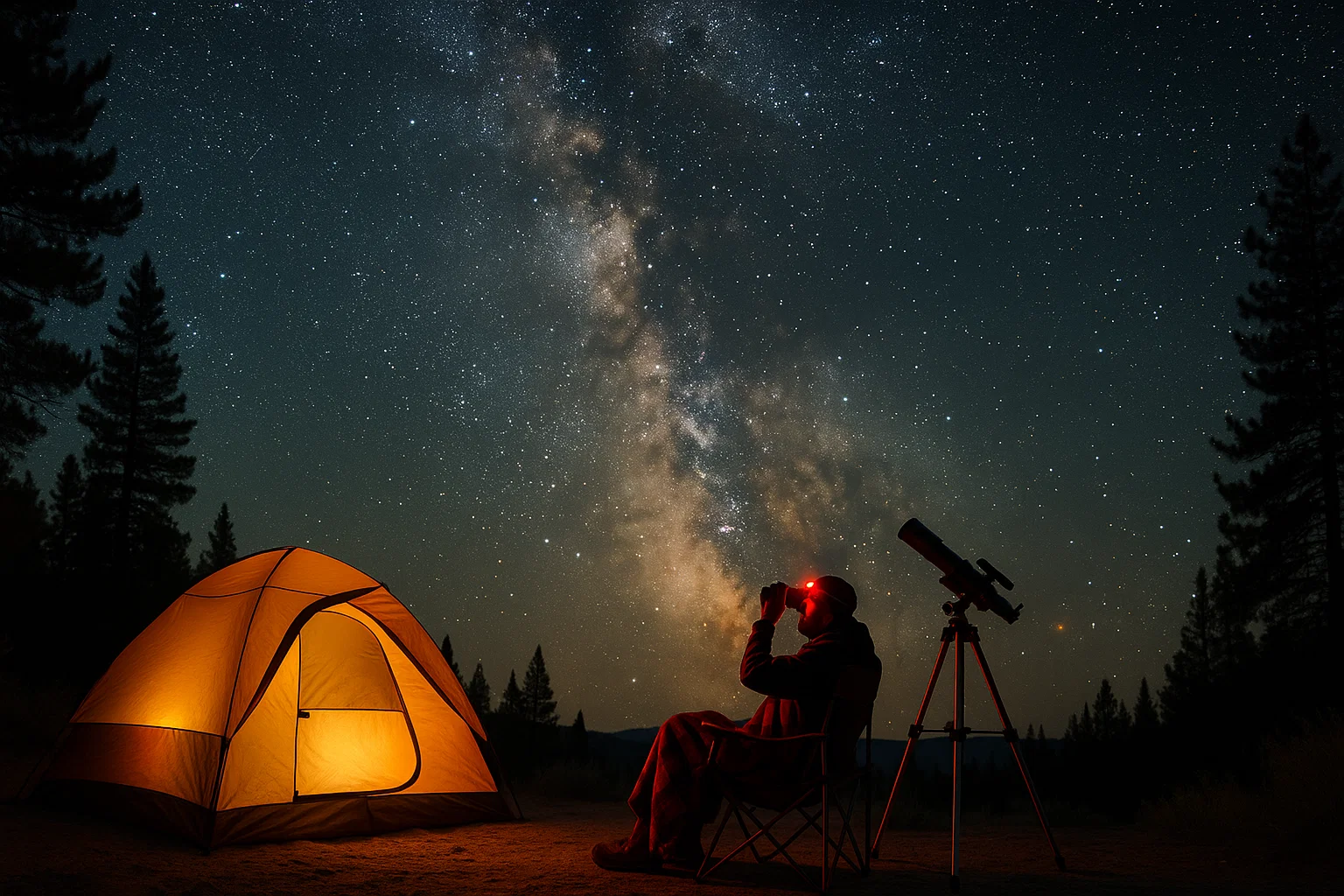
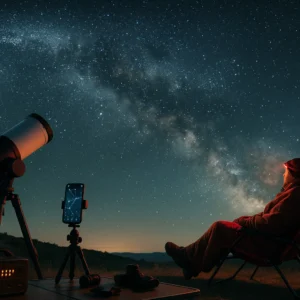
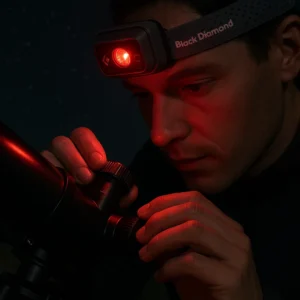
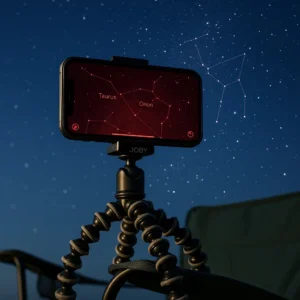
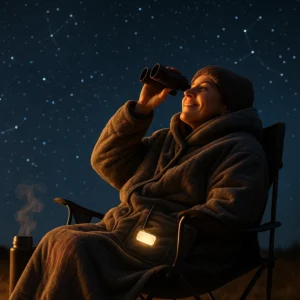
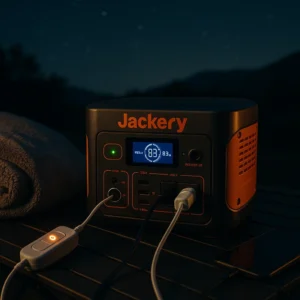
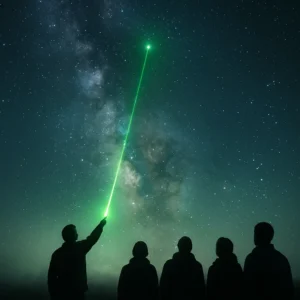
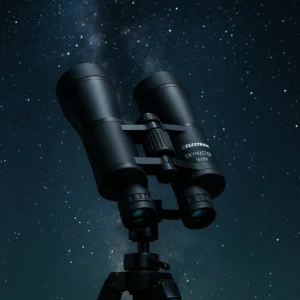
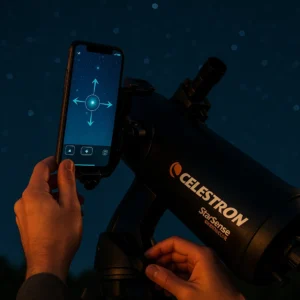
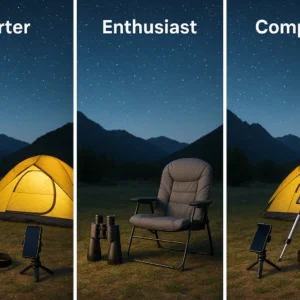
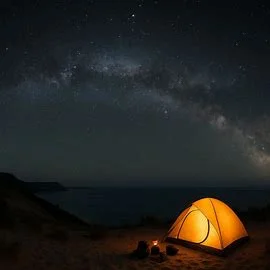
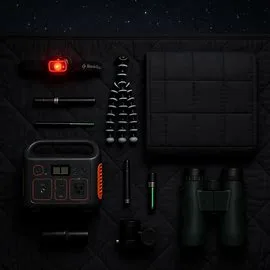

Leave a Reply